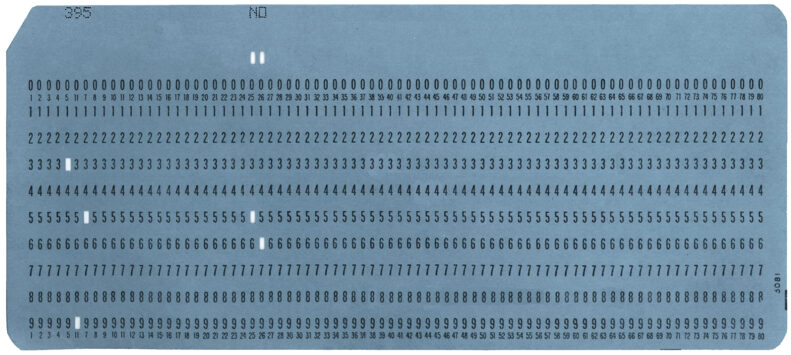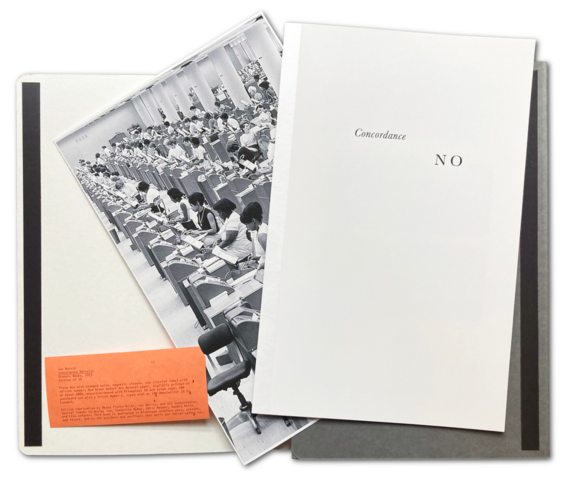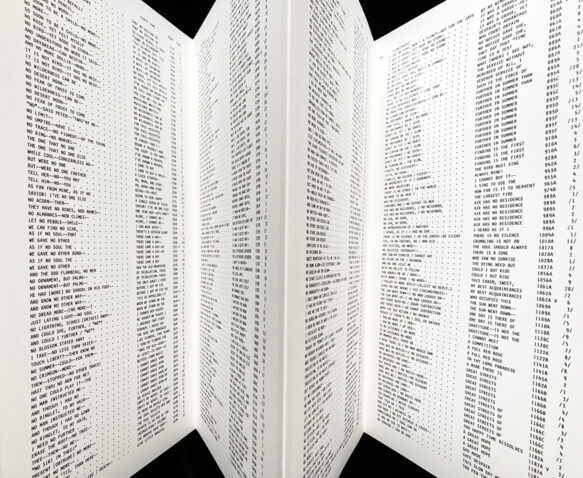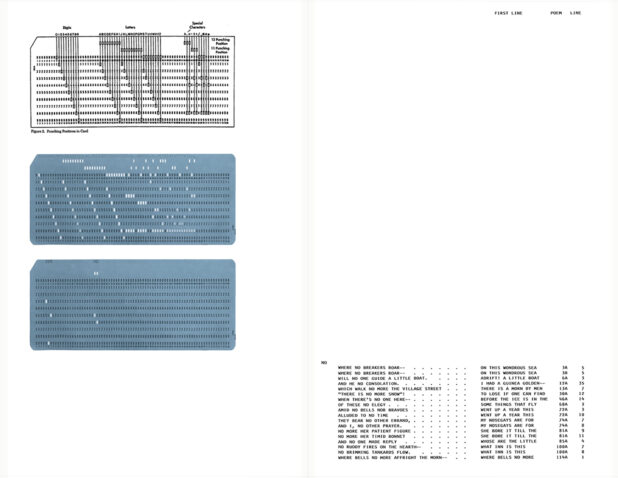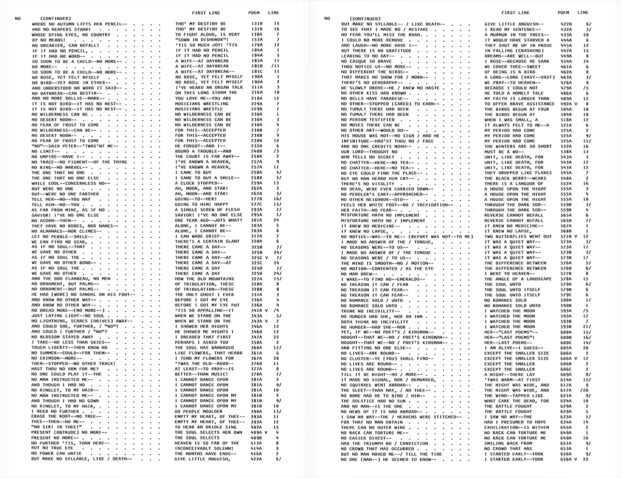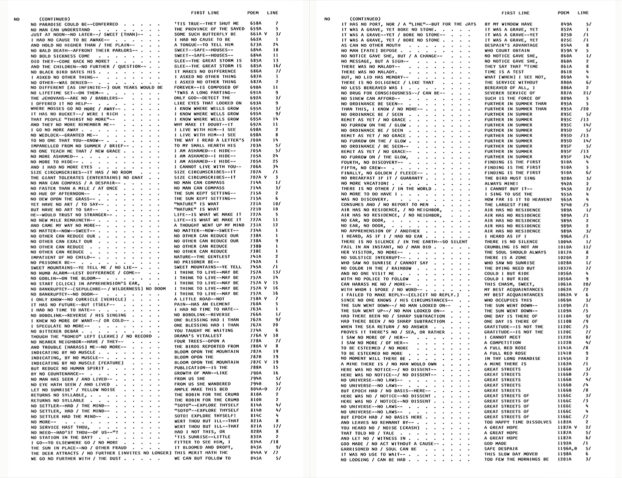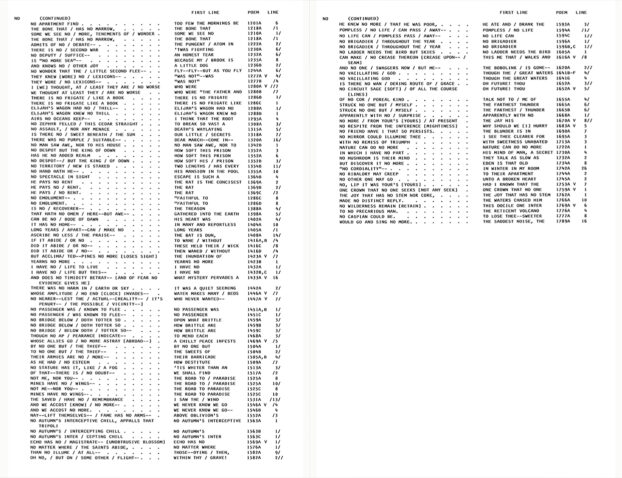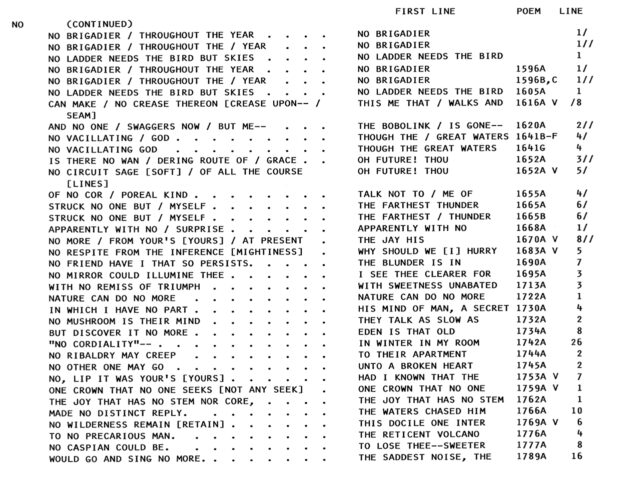A concordance indexes the words a major author has used in her work over the course of her lifetime. Each word is listed alphabetically and chronologically, indexed, and cited in order of frequency. In this artist book, I respond to the omission of the word “no” in The Concordance to the Poems of Emily Dickinson, edited by S.P. Rosenbaum (Cornell University, 1964). Dickinson used the “nonsignificant” word “no” 395 times. “Yes” which was included? Four. What is significant to a poet writing to “further ‘no’”?
The 1964 concordance was based on an early computerized descendant of the Jacquard loom; the process involved creating a binary system of 10,000 IBM punch cards with Dickinson’s poem entries. Rosenbaum’s concordance relied upon computer programmer James A. Painter’s supervision of work mediated through a Hidden Figures-style room-sized IBM 700 Series mainframe computer. Whom did Painter supervise? Concordance Omission is in dialogue with embedded power structures—in technology, poetics, page architecture, scholarly apparatus, library cutter systems, and more.
The edition was fabricated by Becca Flores-Vitti, Jen Bervin, and ECS Conservation. The colophon mentions special thanks to Ansley Joe, Catherine McRae, Edric Mesmer, Kendra Paitz, and Lisa Lofgren; per Bervin, the book is “dedicated to Dickinson scholars past, present, and future, and to the punchers and verifiers that built our social safety net.”
